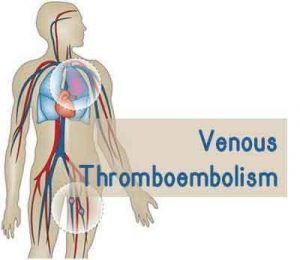- Home
- Editorial
- News
- Practice Guidelines
- Anesthesiology Guidelines
- Cancer Guidelines
- Cardiac Sciences Guidelines
- Critical Care Guidelines
- Dentistry Guidelines
- Dermatology Guidelines
- Diabetes and Endo Guidelines
- Diagnostics Guidelines
- ENT Guidelines
- Featured Practice Guidelines
- Gastroenterology Guidelines
- Geriatrics Guidelines
- Medicine Guidelines
- Nephrology Guidelines
- Neurosciences Guidelines
- Obs and Gynae Guidelines
- Ophthalmology Guidelines
- Orthopaedics Guidelines
- Paediatrics Guidelines
- Psychiatry Guidelines
- Pulmonology Guidelines
- Radiology Guidelines
- Surgery Guidelines
- Urology Guidelines
Cesarean Section raises Risk for Postpartum Venous Thromboembolism : CHEST Study

Women are four times more likely to suffer a VTE after a cesarean section compared to a vaginal birth, according to a new study in CHEST®.
Roughly one third of all births in Europe and North America now occur via cesarean section (CS). Following any birth, women are at an increased risk for a venous thromboembolism (VTE), but it’s believed that CS leaves women more vulnerable to VTE, blood clots, than vaginal delivery (VD). A new study published in CHEST determined that there is a link between CS and an increased absolute risk of VTE, including pulmonary embolism and deep vein thrombosis. Investigators found that CS was associated with a higher rate of overall VTE risk, with emergency CS associated with the greatest risk.
This comprehensive analysis systematically reviewed 60 authoritative studies related to postpartum VTE outcomes. Investigators found that CS carries a fourfold greater VTE risk than VD. “We found that CS is an important independent risk factor for the development of VTE in the postpartum period and that approximately three VTE will occur for everything 1,000 CS performed, with greater risks for nonscheduled emergency CS,” said lead investigator Marc Blondon, MD, Division of Angiology and Hemostasis, Geneva University Hospitals, Geneva Switzerland. These risks were largely independent of other factors like maternal age and body mass index.
Pregnant women become more susceptible to VTE due to a variety of factors, including venous stasis and trauma associated to delivery. Also, hemostatic changes drive increases in some coagulation factors, while decreasing bleeding inhibitors, but for some reason these changes seem to be worse for women who deliver via CS. “In the postpartum period specifically, women following CS exhibit greater activation of coagulation than women following VD, as reflected by greater D-dimer levels,” explained Dr. Blondon. D dimer levels indicate that blood clots may be forming or breaking down in the body. “This outcome may be a result of the conditions leading to the CS or to the procedure itself, similar to the increased VTE risk following non-obstetric surgery. Furthermore, physical activity is reduced following CS compared with following VD, with delayed recovery of mobility occurring in the first two days following delivery.”
As with many non-obstetric surgical procedures, thromboprophylaxis, or preventive measures taken to try and stop VTE before it happens, is commonly employed to try and minimize risk; however, researchers found little evidence on the use of thromboprophylaxis after CS. “Thromboprophylaxis seems widely underutilized in the United States: it is prescribed in 25% of women following CS (mainly compression stockings with less than 3% given heparin prescriptions),” stated Dr. Blondon. “It is estimated that 75% of women following CS do not receive any prophylaxis in the postpartum period. This scenario may arise from a lack of recognition by care providers of the risk of VTE following CS.”
Investigators also recommended against compression ultrasound when CS patients without symptoms of VTE are discharged from the hospital because their research indicated that it was not useful in catching postpartum DVT.
This new study helps shed some light on VTE risks associated with CS. Practitioners should be aware of the risks and further research is needed to plot the best course of action and inform future guidelines concerning thromboprophylaxis.
“Preventing postpartum VTE following CS may lead to an important reduction of its associated morbidity and mortality from a public health perspective,” concluded Dr. Blondon. “In this setting, further observational studies and randomized trials are needed to better appreciate the risks of VTE in specific groups following CS and to define the efficacy and safety of thromboprophylaxis.”
You can read the full article by clicking on the following link :
Marc Blondon, Alessandro Casini, Kara K. Hoppe, Françoise Boehlen, Marc Righini, Nicholas L. Smith. Risks of Venous Thromboembolism After Cesarean Sections: A Meta-Analysis. Chest, 2016; 150 (3): 572 DOI:10.1016/j.chest.2016.05.021

Disclaimer: This site is primarily intended for healthcare professionals. Any content/information on this website does not replace the advice of medical and/or health professionals and should not be construed as medical/diagnostic advice/endorsement or prescription. Use of this site is subject to our terms of use, privacy policy, advertisement policy. © 2020 Minerva Medical Treatment Pvt Ltd